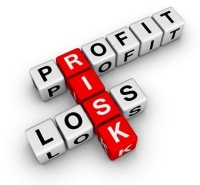Risk Off vs Risk On Trading in Forex
A risk-off/risk-on environment is defined based on how the market in general views a specific event. To be more exact, it represents the market reaction to a specific event, and this reaction might take a day, a week, or even more. Trading the currency markets is all about perceptions, especially these days when humans are following robots. How an event is perceived therefore plays an important role. Sometimes the market is so strongly biased that economic releases won’t even matter in the general trend, and the counter-trend move is used only for adding to the initial position. Strong trends tend to have a correlated nature among the Forex currencies, and this is what risk-off/risk-on means.
| Broker | Bonus | More |
|---|
Defining a Risk-Off/Risk-On Environment

How to Trade a Risk-Off Environment
A risk-off environment is defined as one in which the market sentiment is negative. In the presence of such an environment, investors/traders seek safety in currencies associated with being safer. The CHF (Swiss Franc) and the JPY (Japanese Yen) are currencies that are bought under a risk-off sentiment, as they are viewed as safe-haven currencies. Therefore, the USD/CHF moves to the downside, as also does the USD/JPY. A risk-off sentiment drags the US equities indexes to the downside as well, and these in turn will drag the global stock market to the downside. It is no secret now that globalisation makes financial products move in a correlated matter. The USD/CAD is typically a currency pair that moves to the upside under such conditions, but this currency pair is influenced by the oil market. This makes it a bit more difficult to predict its moves, and it is not always associated with a risk-off sentiment. The classical example, and the most recent one, happened when the US presidential election took place at the start of November 2017. The election of Mr Trump as the president of the United States has been perceived by markets as being a risk, more so than the election of Mrs Clinton. This made the risk-off moves, as described above, occur constantly as positive news regarding Trump was released. This environment therefore held firm for the whole presidential race, and even into the election night. However, at the point at which it became obvious that Trump was going to win the election, the market turned and, instead of a risk-off sentiment, a new risk-on sentiment took over.
How to Trade a Risk-On Environment
A risk-on sentiment is exactly the opposite of a risk-off, and it means the market is in a bullish mode. The equity market, that is! From a currency pair point of view, some currencies are moving up, others down, but the overall idea is that the US dollar is being bought against the currencies that are perceived as representing the risk. Typically, a risk-on environment is defined as a correlated move that sees the USD/CHF, USD/JPY, and equity indexes moving to the upside. On the other hand, the USD/CAD moves to the downside as the oil price is most likely to rise. It is worth mentioning here that both risk-on and risk-off moves were different some time ago. They were defined by the EUR/USD, GBP/USD, AUD/USD and NZD/USD moving up, while USD/CAD moved to the downside in a risk-on sentiment. In general, the US dollar was sold aggressively under such a move. This changed recently as central banks moved rates into negative territory, and became engaged in unconventional monetary policy moves. The Quantitative Easing programmes that ran, and still run, all around the world distorted the risk-on/off sentiment as it was known before. Under such programmes, the central banks buy their own government’s bonds, the idea being to create inflation. Markets had to adapt to this new reality, and these days we’re seeing negative interest rates in many important central banks’ jurisdictions around the world. Such a negative rates environment has the purpose of stimulating commercial banks to lend more money to the real economy, thus creating jobs and so enabling economic growth to pick up. Together with economic growth, inflation will also pick up, and when this happens, central banks will normalise their monetary policy. Until then, however, markets adapted to the new realities, and the risk-on/off sentiment has been defined. As a rule of thumb, a risk-off trade is perceived as one that is selling the riskier currencies against everything else on the dashboard. These currencies are the CHF and the JPY.
A risk-off situation is a bearish one, or a negative one, in which the panic sentiment takes over markets. Typically, in a panic situation, prices move faster than in a bullish case, so traders need to react very quickly to it. Ahead of an event being perceived as a risky one, typically Forex brokers send emails announcing to their clients that the margin requirements are increasing. Wider spreads are to be expected as well, and stop loss and take profit orders are usually executed with slippage. Under a risk-on move, the sentiment is bullish and currency pairs move at a normal pace. After all, a bullish environment is always considered to be a positive one. Knowing what to expect from a risk-on/off perspective gives traders a competitive advantage. This is very helpful when trying to avoid overtrading, as trading correlations should help to do that.
Other educational materials
- How to Use Parabolic SAR to Buy Dips or Sell Spikes
- Bollinger Bands – Profit from One of the Best Trend Indicators
- Trading with the Cloud – Use Ichimoku Cloud to Spot Reversals
- Forex Market Terminology
- Profit from Forex Trading Using Different Trading Styles
- How to Set Up an Expert Advisor
Recommended further readings
- New evidence on the determinants of bank risk. Stiroh, K.J., 2006. Journal of Financial Services Research, 30(3), pp.237-263.
- “Risk-on/risk-off, capital flows, leverage and safe assets.” McCauley, Robert N. (2012).


